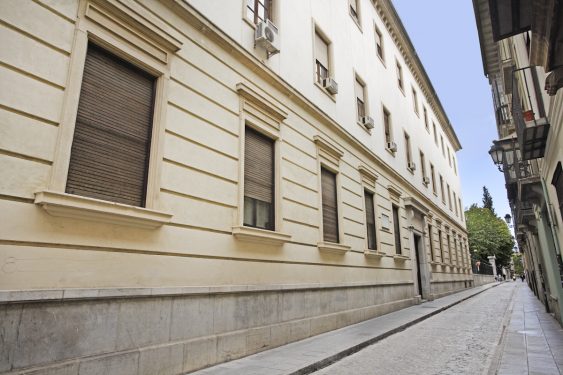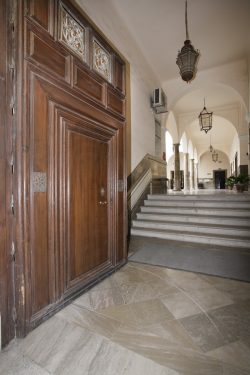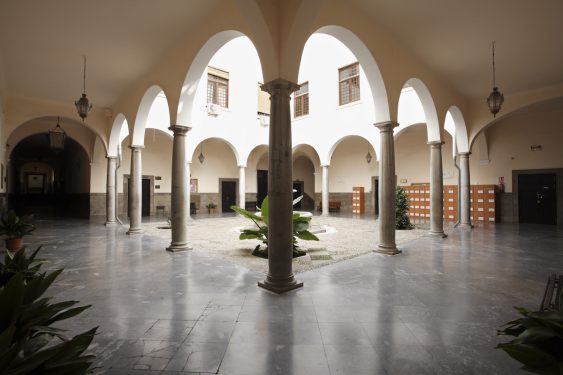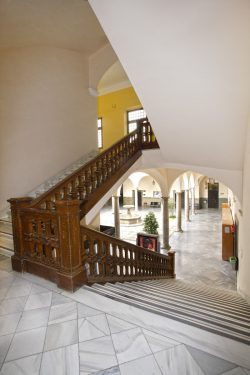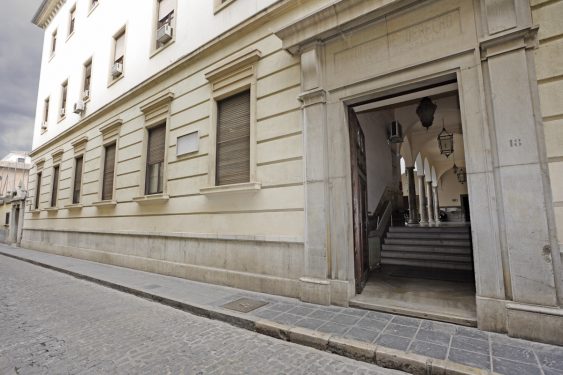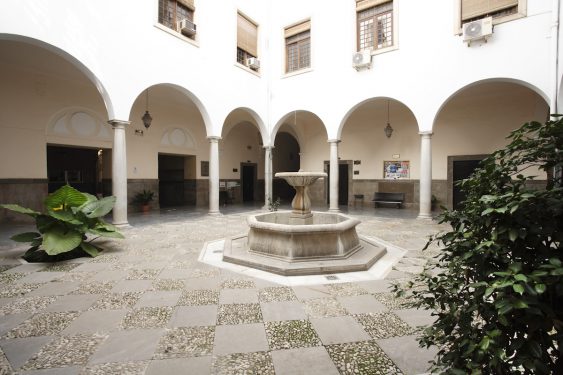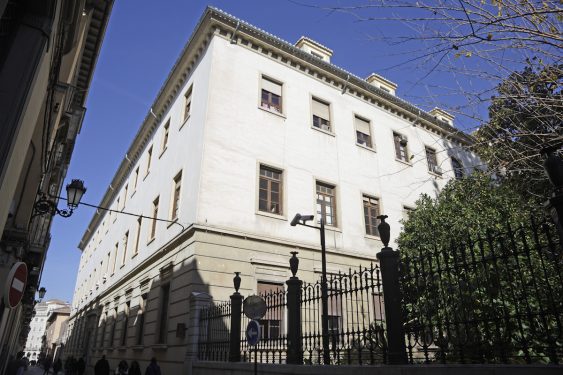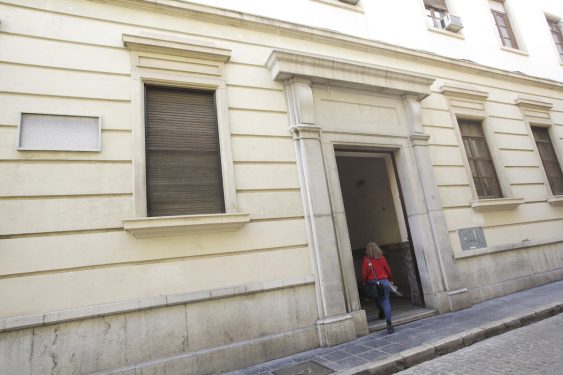The Gobierno Civil, where Lorca was detained on August 16, 1936, occupied a wing of the current Law School, on Duquesa Street. It was ceded to the University of Granada and then demolished and replaced in 1944.
The former Civil Government (Gobierno Civil) of Granada, where Federico García Lorca was taken on the afternoon of August 16, 1936, after his arrest in the house of the Rosales Vallecillos family, had an entrance on Duquesa Street and occupied part of the current Law School.
The building, in very poor condition already in the times of the Republic, was ceded in 1944 to the University of Granada, which demolished it and built it again to house, in 1955, the faculties of Sciences, Law and Philosophy and Arts.
Federico García Lorca was confined in a small room now demolished containing a square table, an armchair and a couple of other chairs.
The Gobierno Civil moved to its present location in the Müller Palace on Gran Vía. The Gobierno Civil was then located a few hundred meters from the house of the Rosales where Federico lived as a refugee for a week and where he was arrested and transferred by car by a group of fascists commanded by the former deputy of the CEDA party Ramón Ruiz Alonso.
After the triumph of the uprising of July 18 and the surrender of the Republican civil governor, César Torres Martínez, the commander José Valdés Guzmán (1891-1939) who, until his departure in April 1937, designed a fierce repression against leftist sympathizers that claimed thousands of dead, mainly shot on the walls of the cemetery of Granada and in Víznar, a small town located twelve kilometers north-east from the capital. According to the investigations, Valdés gave the order to assassinate the poet after calling General Gonzalo Queipo de Llano who responded with a coded phrase: “Give him coffee, lots of coffee”.
Federico García Lorca was confined in a small, dilapidated room containing a square table, an armchair and another couple of chairs. There he was seen by several people, among them José Rosales. In the room, which overlooked the Botanical Garden, he remained for a period of time ranging from ten hours to two full days, according to the different versions of the investigators.
The confinement room, according to research presented in March 2018 by historian Miguel Ángel del Arco Blanco, was located on the same level as the current “department of Constitutional Law on the second floor facing the Botanical Garden. It would be a room measuring about four meters, rectangular, in which there was a table, two chairs and an armchair. It was like an office and had a barred window.”
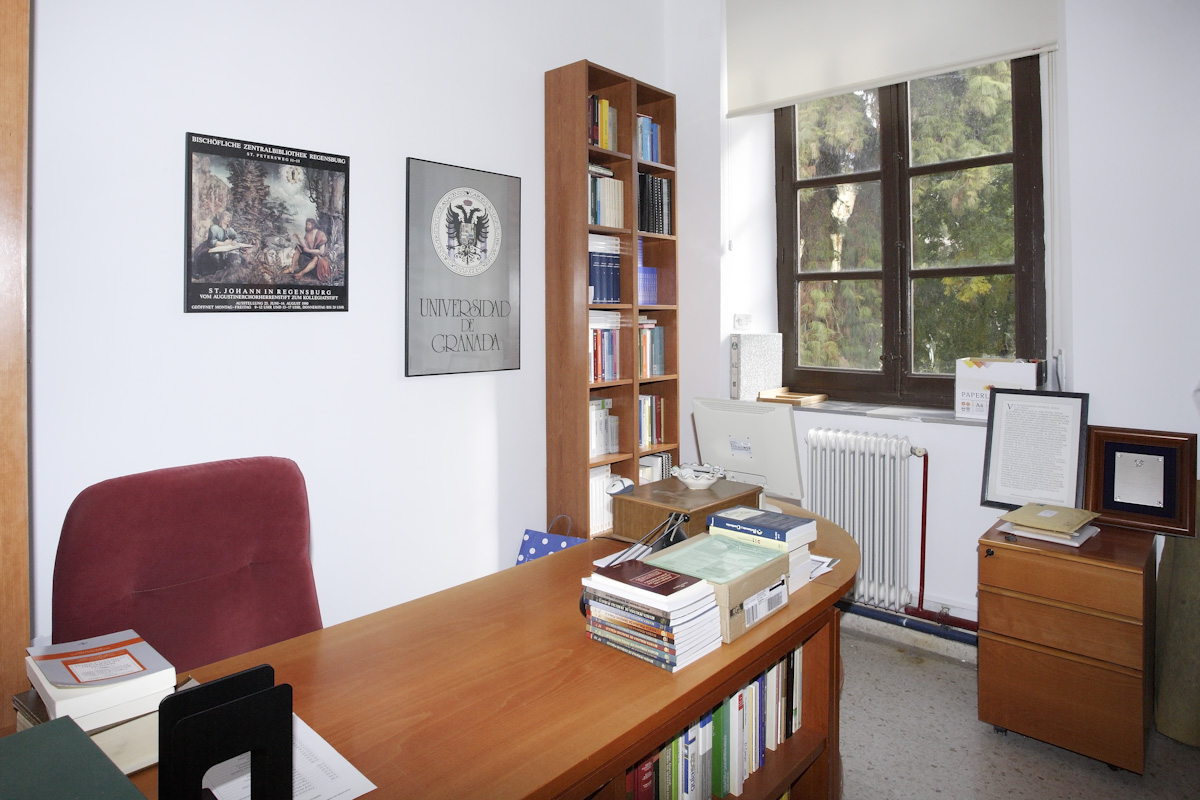
When Lorca and his companions, among them Miguel, one of the Rosales brothers, arrived at the then Gobierno Civil that hot August afternoon, Commander Valdes was at the front.
While Lorca remained under arrest, several brothers of the Rosales family set in motion a laborious, but ultimately futile, plan to free Federico. In addition to Miguel, who raised the alarm, the first to arrive, at nightfall, were the brothers Luis (who came from the Motril front) and José Rosales, Pepiniqui, accompanied by other Falangists such as Cecilio Cirre.
Luis requested Federico’s release and even signed a statement in which he justified his decision to welcome the poet in his house, after the violent searches in the Huerta de San Vicente (San Vicente Farmhouse), and in which he emphasized the non-existence of complaints against him.
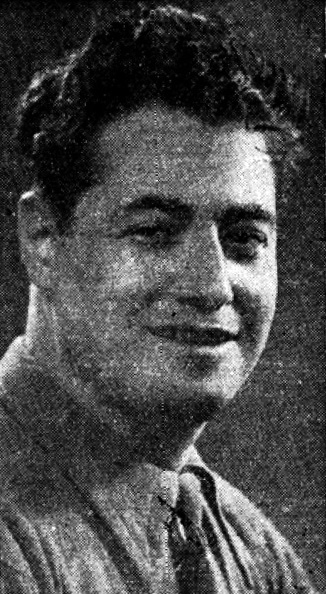
That night of August 16, Luis had a bitter confrontation with Ruiz Alonso, the character who predictably filed the complaint and set the arrest in motion. Both confronted each other at the Gobierno Civil. According to testimonies, Luis Rosales told him: “Why did you show up at the house of a superior without an order and take my friend away? Ruiz Alonso repeated three times: “Under my sole responsibility”, to which Luis replied: “Square up and go”.
The other Rosales brother, José, waited for the return of Commander Valdés and had another serious confrontation with him. According to his own confession, he entered the office pushing and shoving and wielding a pistol.
According to the reconstruction of José Luis Vila-San Juan in the book García Lorca Murdered. The Whole Truth, José Rosales went so far as to point a gun at Valdés in his office: “Did you order Ruiz Alonso to enter my house to arrest García Lorca?” he asked him. “I have not sent anyone to your house,” Valdés replied. Lorca was in an office on the main floor. José was the last of the brothers to see him alive. When he returned to the government the following day, after obtaining an order for his release, he was no longer there.
This version contradicts those sustained by Ian Gibson and journalist Gabriel Pozo.
The hours or days that García Lorca remained in the Gobierno Civil are key to establishing the date of his assassination. There are at least three different theories supported by contradictory testimonies.
According to the theory of Molina Fajardo (corroborated by Miguel Caballero) García Lorca was taken to Víznar the same day of his arrest and, therefore, his execution took place in the early morning of August 17. Supporting this hypothesis are Luis and José Rosales and Ruiz Alonso himself, as well as a number of people related to the uprising such as Vicente Lara, a member of the bodyguard of Valdés.
Ian Gibson (and before him Agustín Penón) maintains that Lorca was detained until the 18th, so his death occurred in the early morning of the 19th. Gibson relies on the statements of Angelina Cordobilla, a servant of the Fernandez-Montesinos family who claimed to have gone twice to the Gobierno Civil to take him food and tobacco. On the third day, she was told, he was no longer there. Cordobilla also assisted with his visits to the socialist mayor Manuel Fernández-Montesinos, who was in the provincial prison and was executed on August 16. Gibson subsequently admitted that Lorca’s detention may have lasted only one day and he was transferred on August 18. Molina Fajardo, however, does not give credibility to the testimony, since there are more testimonies that support the theory of the 17th.
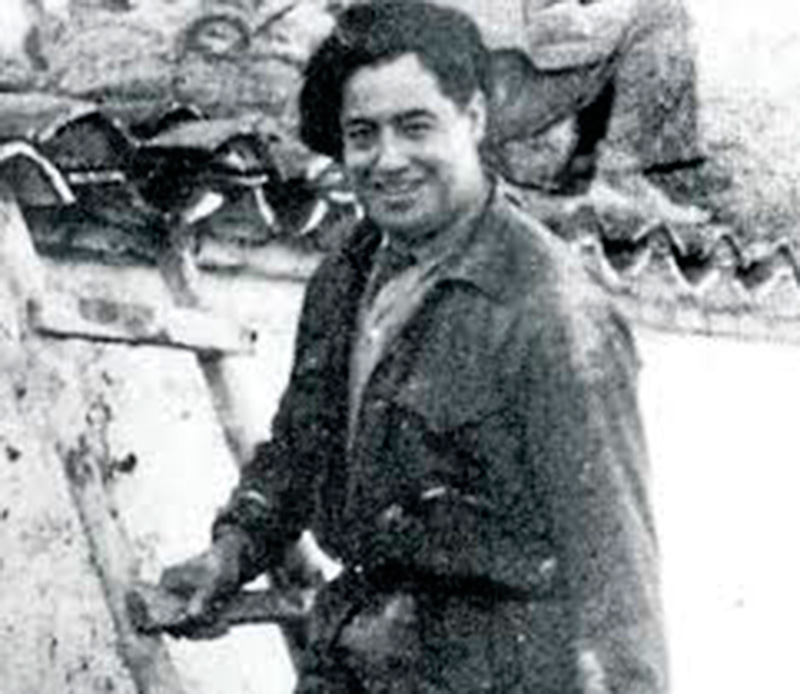
In addition, there is a third version, supported by the journalist Gabriel Pozo who defends that Lorca was shot on the 18th and which is based on a letter written by the relatives of Dióscoro Galindo, the lame teacher from Pulianas who was executed with the poet. In the letter, one of his sons says: “Four hours after that date, that is to say at two in the morning of the 18th, they came and told him that he had to go with them to give a statement, that he was coming back right away. And we never saw him again”.
Historian Del Arco Blanco, on the other hand, maintains that the room where Lorca stayed (barely four square meters) did not meet the minimum conditions to keep a person for more than a few hours. He adds: “The Gobierno Civil was a transit space, which Gibson acknowledges. No trials were held there because it was a violent and extrajudicial repression. At most a statement was taken from an individual and then he was taken to the walls of the cemetery or to Víznar. They tortured those who might know things, such as leaders of political parties and unions, but not Lorca, who was also accompanied by Rosales, an important Falangist. That is why he was not in the usual room where prisoners were held”.
“On the morning of the 17th I went to the Gobierno Civil to take food to Federico. I carried the things in a basket. Only a thermos with milk, a Spanish omelet, a small piece of bread, tobacco and some handkerchiefs (…). I asked for him and after insisting they made me go up some stairs. Everything was very well guarded, with armed men, as if we were at war. They checked the omelet I was carrying. The young man did not want to eat. I remember a man said to me: ‘What a pitiful son, what a pitiful father’. I put the things on a table for him. That was all there was, a table, an inkwell, paper and a pen. Federico wasn’t writing. He didn’t feel like eating. He was very well dressed, with a brand new suit (…). I went for two days. On the 17th and 18th (…). When I arrived again at the Gobierno Civil, on the morning of the 19th, I asked and they told me: ‘Garcia Lorca is no longer here’. But I went up to the room to pick up the thermos and the napkin I had brought the day before. The young man had not eaten”.
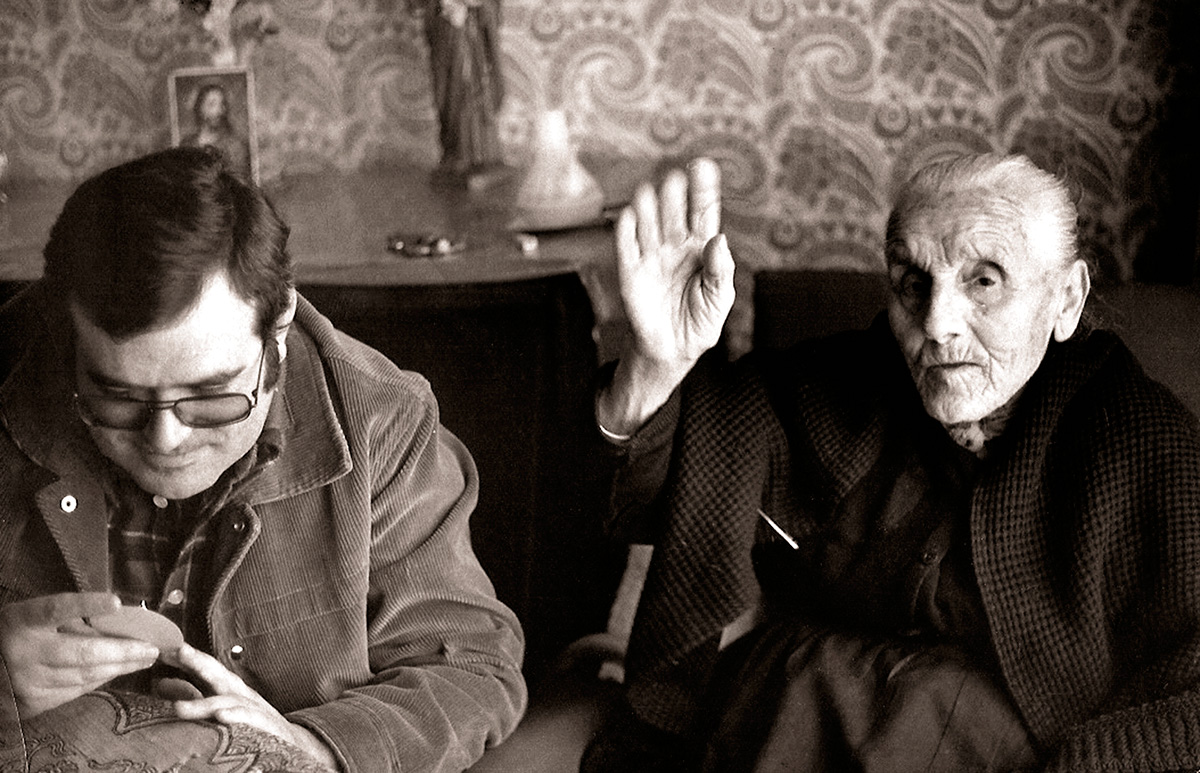
- Miguel Caballero and Pilar Góngora. The truth about the murder of García Lorca. Iberdaf. Madrid, 2007.
- Ian Gibson. Federico García Lorca. Biography. Grijalbo. Barcelona 1989.
- Eduardo Molina Fajardo. The last days of García Lorca. Plaza y Janés, 1983.
- Agustín Penón. Fear, Forgetfulness and Fantasy. Comares, Granada 2009.
- Gabriel Pozo. Lorca, the last walk. Ultramarina. Granada, 2009.
- Antonio Ramos Espejo. García Lorca in Fuente Vaqueros. Diputación de Granada, 2006.
- Belén Rico. “Miguel Ángel del Arco Blanco supports Caballero’s thesis on Lorca’s murder”. Granada Hoy, 2 March 2018.
- José Luis Vila San-Juan. García Lorca Assasinated: the Whole Truth . Planeta. Barcelona 1975.
- Lorca´s location
- Civil Government 1933-1944
- current location
- Law School
- ADDRESS
- Duquesa, 18
- Web
- http://derecho.ugr.es/web/
- DETAILS OF THE VISIT
The rear access from Duquesa Street to the current Law School of Granada University was once the main entrance to the city’s Civil Government. The building is open during the academic year during class hours. Access to the interior patios is free.
